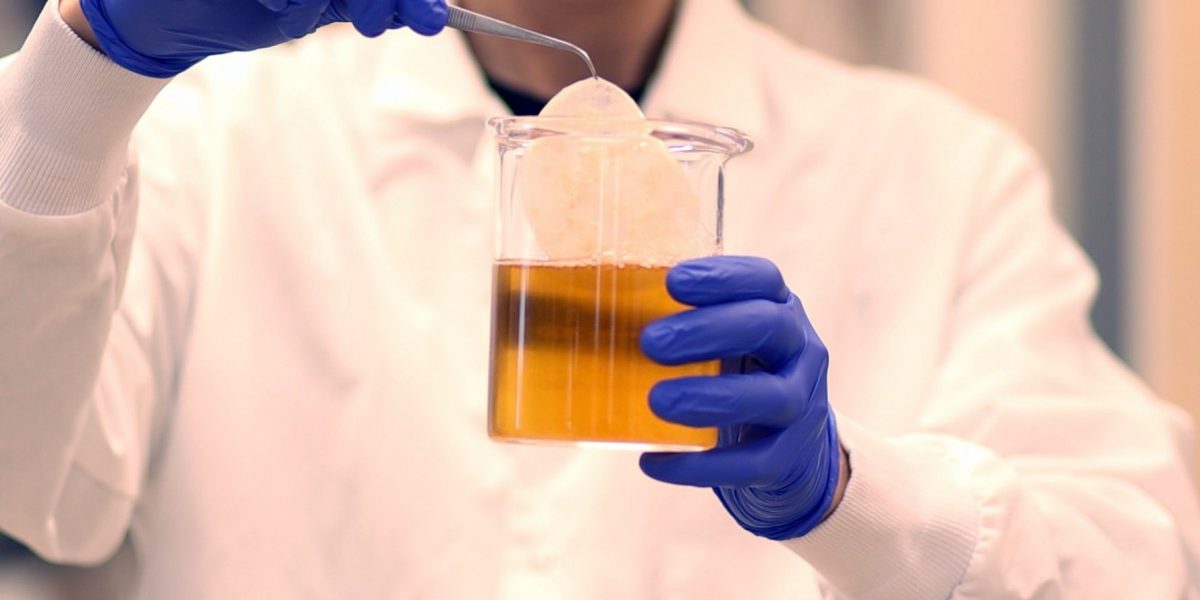RESEARCH TRIANGLE PARK, N.C. — Kombucha tea, a trendy fermented beverage, inspired researchers to develop a new way to generate tough, functional materials using a mixture of bacteria and yeast similar to the kombucha mother used to ferment tea.
With U.S. Army funding, using this mixture, also called a SCOBY, or symbiotic culture of bacteria and yeast, engineers at MIT and Imperial College London produced cellulose embedded with enzymes that can perform a variety of functions, such as sensing environmental pollutants and self-healing materials.
The team also showed that they could incorporate yeast directly into the cellulose, creating living materials that could be used to purify water for Soldiers in the field or make smart packaging materials that can detect damage.
The research, published in Nature Materials, was funded by ARO and the Army’s Institute for Soldier Nanotechnologies at the Massachusetts Institute of Technology. The Army established the ISN in 2002 as an interdisciplinary research center devoted to dramatically improving the protection, survivability, and mission capabilities of the Soldier and Soldier-supporting platforms and systems.
These fermentation factories, which usually contain one species of bacteria and one or more yeast species, produce ethanol, cellulose, and acetic acid that give kombucha tea its distinctive flavor.
Most of the wild yeast strains used for fermentation are difficult to genetically modify, so the researchers replaced them with a strain of laboratory yeast called Saccharomyces cerevisiae. They combined the yeast with a type of bacteria called Komagataeibacter rhaeticus that their collaborators at Imperial College London had previously isolated from a kombucha mother. This species can produce large quantities of cellulose.
Because the researchers used a laboratory strain of yeast, they could engineer the cells to do any of the things that lab yeast can do, such as producing enzymes that glow in the dark or sensing pollutants or pathogens in the environment. The yeast can also be programmed so that they can break down pollutants/pathogens after detecting them, which is highly relevant to Army for chem/biodefense applications.
The bacteria in the culture produced large-scale quantities of tough cellulose that served as a scaffold. The researchers designed their system so that they can control whether the yeast themselves, or just the enzymes that they produce, are incorporated into the cellulose structure. It takes only a few days to grow the material, and if left long enough, it can thicken to occupy a space as large as a bathtub.


